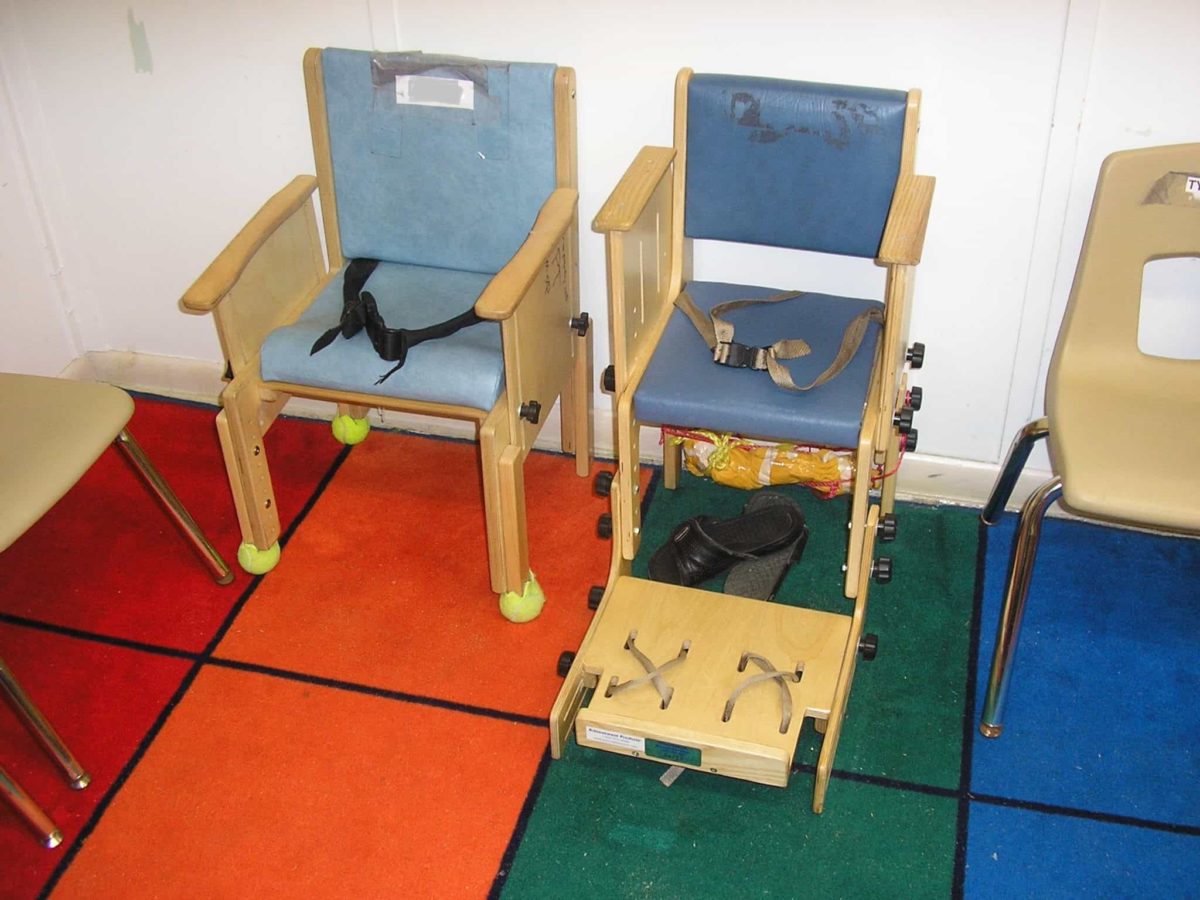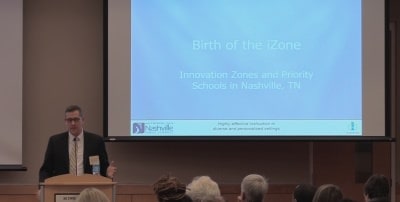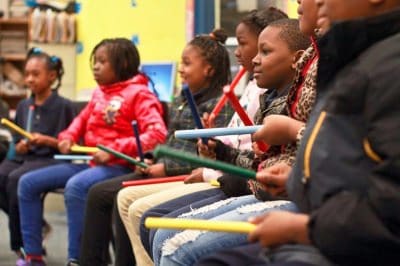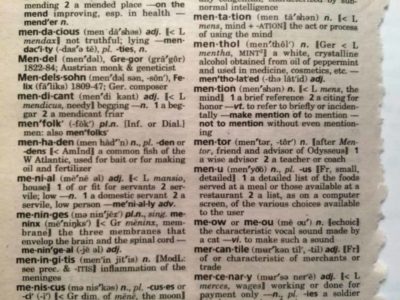

When you think of a school, you probably envision children sitting at desks compliantly facing the front of a classroom. It’s unlikely that your mental picture includes a student strapped to a chair or sitting in a cardboard box, isolated from the other students.
But some of North Carolina’s schools use straps, cuffs, and isolation to control the behavior of students, many of whom have disabilities. These interventions are called seclusion — isolation in an area which they cannot leave — and restraint — restriction of movement, either by physically holding the student or using a device, such as handcuffs or straps. Many of the children subjected to these practices have autism and other disabilities that cause them to act out.
Seclusion and restraint are permitted in North Carolina public schools under certain circumstances, but these interventions should never be the first response to undesirable behavior. Behavior plans should focus instead on positive interventions. For years, Disability Rights North Carolina has called for all school systems to ban prone restraint, which is the practice of holding a child face-down on the floor. This practice has seriously injured children and has already been banned in North Carolina’s mental health, developmental disability, and substance abuse service systems.
The Individuals with Disabilities Education Act (IDEA) is the law that provides for an Individualized Education Program (IEP) for students with disabilities. The IDEA calls for positive behavioral interventions and supports (PBIS). PBIS is a system for implementing evidence-based behavioral interventions that can be used school-wide or tailored to an individual student. Schools that have implemented PBIS demonstrate decreased disciplinary referrals and increased academic achievement. Implementing PBIS can reduce situations in which the use of seclusion and restraint may even be contemplated.
As part of a student’s IEP, the student may have a Behavior Intervention Plan (BIP). The BIP describes the type of interventions school staff can use to address the student’s undesirable behaviors, and the student’s goals for more appropriate behaviors.
If a student has a BIP, school staff or the parent may seek to include the use of seclusion and/or restraint as one of the interventions in the BIP. While this is not prohibited, Disability Rights NC does not recommend including such interventions in the BIP for the following reasons:
- The emphasis of any BIP should be positive interventions and supports, not reactionary and negative consequences.
- Schools are required to implement the IEP (including the BIP) and may view the inclusion of seclusion and/or restraint as a requirement to use such interventions.
- Including seclusion and/or restraint in the IEP may be considered a tacit authorization of its use and could impede the ability of a parent or student to later make a complaint about its use.
Even if the student does not have a BIP, the IDEA requires a student’s IEP Team to consider the use of positive interventions and other strategies to address behaviors that impede the learning of that student (or others). The IDEA makes no mention of intervention strategies like seclusion and restraint, indicating a preference for positive interventions in the law governing disability education.
For personnel permitted to use seclusion and restraint, training is critical. Training programs should focus on de-escalation techniques — ways to calm the situation through support, communication, and empathy. Programs should also teach restraint positions and techniques that are designed to keep both staff and students as safe as possible.
Any time one person puts hands on someone else, there is a risk for injury. But some techniques create a much greater danger for harm or even death. Holding a child face-down on the floor (i.e., the prone position) can restrict the child’s breathing. Physical characteristics like obesity or asthma may increase the danger. Children in schools have suffered cuts and scrapes, petechiae (broken blood vessels in and around the eyes that are typically seen in cases of strangulation), broken bones, and even death from prone restraint. No training program selected by a school should include prone restraint positions.
Disability Rights NC recommends each school system take an affirmative stance and explicitly ban the use of prone restraint.
For more information or if you believe your child has been improperly restrained or secluded in school, contact Disability Rights NC at 877-235-4210.




